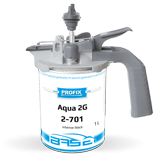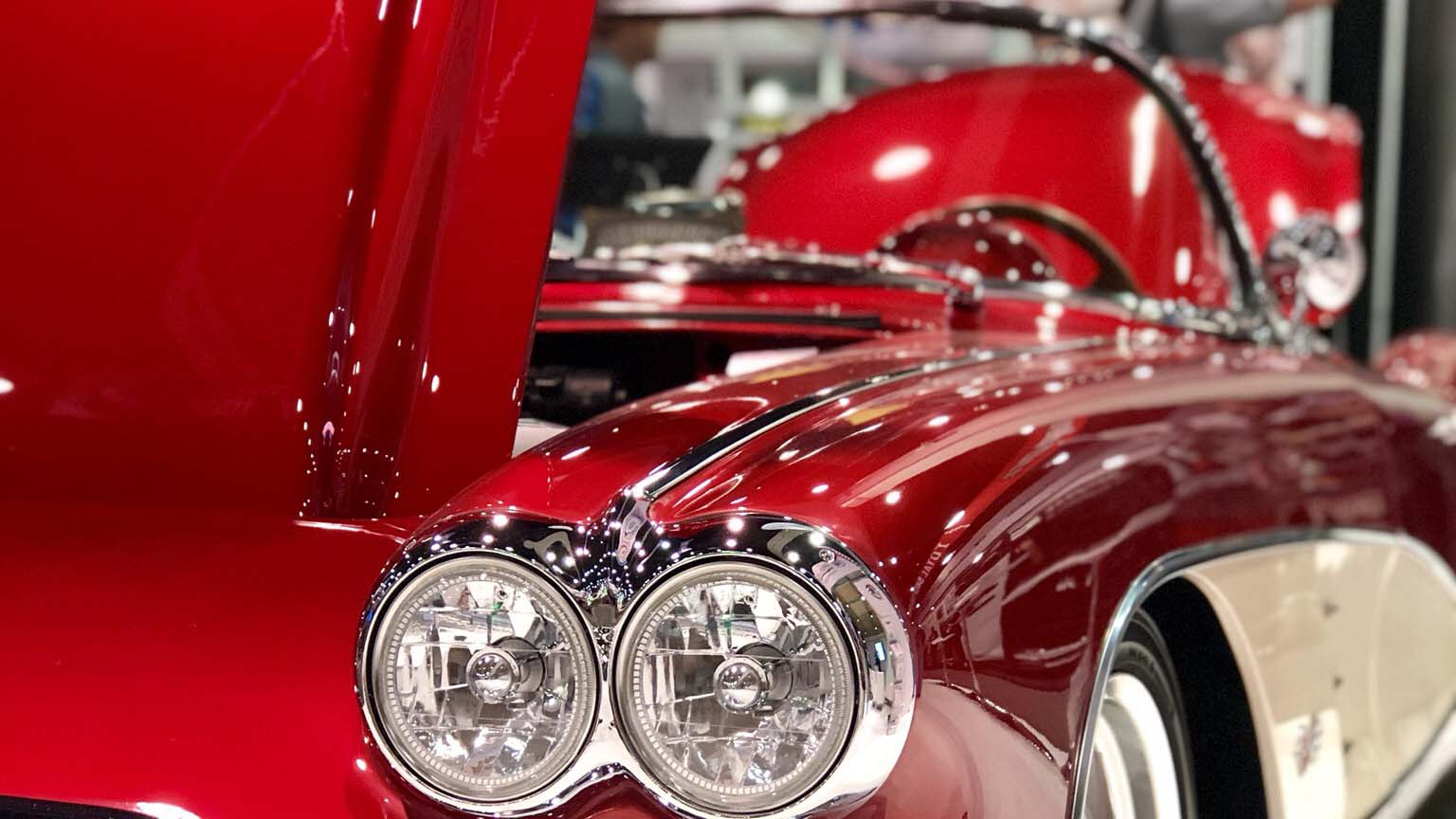Recently added
Most read
Why use the water-soluble lacquers, when the conventional ones are available?
Painter versus plastics
Painter versus plastics
The first material that comes to mind when mentioning the car body is metal. From the very beginning, the bodyshell was made of sheet metal, but over time production process evolved mainly due to importance of the weight reduction of the entire car, which is necessary to achieve higher performance. Especially recently, when the engines are dramatically tuned the weight of the car must be significantly reduced so that smaller engines do not stand out from the habits of customers. Many years ago, decisions were made to use polymeric and composite materials for car construction. While visiting a car dealership we can see in many models differences in the shade of lacquered plastic elements. Typically, the buyer with less experience in the euphoria of purchase will not look closely against the light, if the color on the whole new car is the same. But already, the customer receiving the car after repair will definitely look closely at the done service.
More and more plastic parts
As I mentioned above, the plastic parts of the body occupy an increasing area of current cars, because in addition to excellent flexibility and durability, they are characterized by ease of production and, above all, they are cheaper than metal parts. As standard, we usually include plastic parts such as bumpers, slats, fenders, side mirrors, fuel filler flaps and other body elements. An increasing number of cars made entirely from various plastic and composite mixtures are entering the market. This requires repair contractors to have very good knowledge of the various repair technologies. Probably many people are curious about the process of repairing and painting plastics, which I will discuss later on, now I have to mention about the technology, that is used in car paint shops, which contributes to the color differences in new cars.
Difference in color
OEM factory paint shops in the automotive industry are usually separated due to the type of varnished substrate and different surface preparation. The painting of metal elements takes place in a different paint shop than the one where the plastic elements are painted. So we can give some reasons for the differences in color: - different lacquering methods, thickness of the paint layer, the color of the substrate; - different shades of lacquer from various batches provided by the paint manufacturer; - adjustments on the production line and even re-painting. Of course, everyone is trying to eliminate these problems and, for example, the fuel filler flaps are being made again from metal. When repairing lacquered car parts, we are better off when the plastic part can be welded together and then re-painted after the appropriate preparation procedure. However, it happens that you have to replace a plastic element that was not painted in the factory, because we are not able to restore the effect of the structure that was created in the injection mold. Of course, there are structural lacquer (CP 582 by Profix), that simulates the original effect in a similar way, but that may not be enough.
Basic painting preparations
Preparing a new element for painting or for a repair, in order to determine the correct procedure, we should start by identifying the type of material from which the element was made, the marking is placed in the inner unlacquered side. Currently, such markings must be placed due to disposal restrictions. We can also deal with parts that are not adapted to accept the paint layer, as it is in the case of PP, PE or POM. However, in the situation when the designation has not been placed, it remains for us to perform the adhesion test. It also happens that the vehicle manufacturer deliberately prepared a plastic element covering it with a protective coating, and thus we cannot paint it. Such elements protection is used to protect it from operational damage (atmospheric conditions). With this situation, we meet in the case of commercial vehicles and the right information should look for the vehicle manufacturer.
Methods for repairing a new element
At the beginning, let me mention a frequent question asked during the training and it relates to the varnishing of surfaces made of polyester reinforced with fiberglass. It is generally accepted that we repair such an element in accordance with the technology provided for metal components (unless otherwise specified by the manufacturer). In the case of repairing the factory-painted part, we focus on the application of material repair technology only in the place of damage.
When we start painting a new element, we must start by removing chemicals based on silicones, which protect the injection molds with a given element and interfere with the correct and effective application of the varnish coat. We use for this in the first stage water with detergent, then after drying, silicone remover. It is good after this initial cleaning of the element to be subjected to annealing (for 30 minutes at 60 ° C) or carefully use a heat gun (caution is recommended here, because we can destroy the element). After heating, wash it again (e.g. CP 015 by Profix) to remove residual silicones, that have escaped to the surface of the element when it is heated. For degreasing of plastic parts it is worth to use anti-static silicone removers (e.g. CP 012 by Profix), which, besides cleaning the surfaces, allow to remove electric charges. Electrification of elements can effectively hinder painting with a metallic base and will also attract more dirt to the surface. During the painting process of the new element, we can use the wet-on-wet repair method. We start with applying a primer on plastic, so-called adhesion promoter (e.g. CP 390 from Profix), so that after evaporation proceed with proper painting 1K, 2K. We can encounter new elements on which the manufacturer has secured the adhesion for the topcoat by applying its proper undercoat. Thanks to this, the preparation procedure for painting is faster, we can start by removing the surface, cleaning and degreasing with a proper remover and we can start painting.
Several automotive companies selling spare parts of the body, make them available in the right color of the car (e.g. HONDA), then we limit ourselves only to the exchange of a given element.
Methods for painting a damaged item
In the case of partially damaged painted parts, we process the grinding and after cleaning we put a plastic putty (e.g. CP 341 by Profix), then after obtaining a suitable surface, we can proceed to the cleaning and application of the so-called plastic primer element. adhesion promoter (e.g. CP 390 from Profix). After evaporation, apply a filling primer. If the plastic element is flexible, we already add a plasticizer (e.g. CP 490 from Profix) to the filling primer, the same one we can add to 2K varnishes, in order to give the paint coat the right flexibility and prevent cracking during operation. The elements are best dried at ambient temperature or in the booth at 50 ° C for 30 minutes. Remember that the use of higher temperatures in the cabin or the infrared heater can cause damage to the element through its deformation. After grinding the filling primer, we are ready for painting, it is enough to clean the surface, rinsing with a plastic remover and we can start. If we use a softener for 2K varnish, we have to take into account the need for longer drying of the repaired coating. The same preparation procedures for painting plastic components apply to conventional surface coatings as well as waterborne basecoats.
How to polish?
If during the painting process, contamination has formed in the lacquer layer, we can try to remove them by using the polishing method in accordance with the technology recommended by the manufacturer of polishing materials. One of the most important limitations that occur when polishing the lacquer using the mechanical method, i.e. the polishing machine, is the rapid heating of the plastics through which we can damage the coating of the lacquer.
The final effects?
Despite the use of the same products for varnishing plastic and metal surfaces, there may be slight differences in shade due to the fact that otherwise the metallic base coat will be laid on a metal and, on a plastic basis. The basis for success in varnishing-repair of plastics is compliance with the rules contained in the technical instructions of manufacturers of varnish materials. Then the difference in elements painted on different substrates will be invisible.









